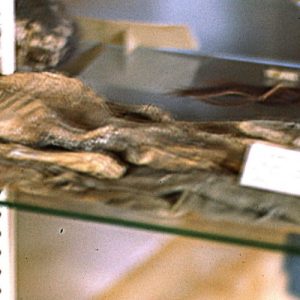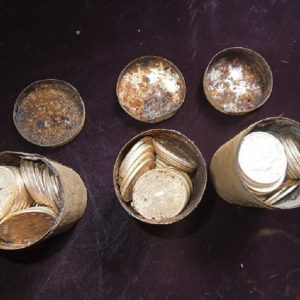Thinis was a city of the ancient Egyptian civilization. Whilst Thinis and its alternative, This, were the Greek names of the city, the ancient Egyptians knew it as Tjenu. This city once served as the capital of ancient Egypt during the Early Dynastic Period. The existence of Thinis is attested by ancient authors, such as Manetho, widely believed to have been an Egyptian priest who lived during the Ptolemaic period. Reference to Thinis is made also in religious texts, such as certain spells found in the The Book of Going Forth by Day (better known as the Book of the Dead ). In spite of references to this city in the literary sources, the exact location of Thinis is still unknown, and therefore remains a great mystery amongst archaeologists and Egyptologists. As a result of this, Thinis is often called a ‘lost city.

1st Dynastic King of Egypt, Menes or Narmer. ( Public Domain )
The 1 st Dynasty of Egypt was established when Upper and Lower Egypt were united under the rule of one pharaoh. According to the writer Manetho, the founder of the 18 th Dynasty was a man by the name of Menes (who is today identified with Narmer, once thought to have been his successor). This pharaoh is said to have been the leader of a tribal confederation known as the Thinite Confederacy. When Upper and Lower Egypt were united, Menes made Thinis his capital, and ruled the country from there.
During the Third Dynasty, the city of Memphis was established, and this became Egypt’s new capital. As a result of this shift, the importance of Thinis suffered a decline. Nevertheless, despite losing its status as the capital of Egypt, Thinis was still a regionally significant urban centre, and served for some time as the capital of the eighth nome in Upper Egypt. It would eventually be replaced by Abydos as the capital of this nome.

Nearby Abydos (Osireion pictured), after ceding its political rank to Thinis. ( CC BY-SA 2.5 )
The written sources indicate that Thinis was still a city of great wealth, even long after it ceased to be the capital of Egypt. During the reign of Thutmose III, the 6 th pharaoh of the 18 th Dynasty, the yearly tax imposed on Thinis is recorded to have included six debens of gold, half a deben of silver, as well as produce such as grain, cattle, and honey. The wealth of Thinis is evident when compared to nearby Abydos, which was taxed more lightly. For instance, Abydos was required to pay three debens of gold each year, which is half of that paid by Thinis. As another example, whilst Abydos was taxed three sacks of grain per year, 62 sacks were required of Thinis. It may be added that the city was not only prosperous, but was also a regional powerhouse. It is recorded, for example, that the ruler of the Thinite province, a man named Antef, controlled the entire oasis region of the Western Desert, the produce of which would have increased the wealth of Thinis.

Hunefer’s Book of the Dead, detail from Anubis to Thoth. (Steven Zucker/ CC BY-NC-SA 2.0 )
Thinis also has a significant role in the religious beliefs of the ancient Egyptians. This city has been referred to in some of the spells from the Book of Going Forth by Day . Spell 18, for instance, contains the following words,
‘O Thoth who didst vindicate Osiris against his enemies, vindicate (Name) against his enemies in the great Council that is in Abydos on this night of the h3kr-feast (at) the counting of the dead, at the stocktaking of the Blessed, when dancing took place at Tjeni.’
In another spell, Spell Pleyte 168, the following invocation is seen,
‘Raise thyself, Thinite of the Netherworld, in the form of thy (Son) Horus, that he may be pleased with thee.’
Although Thinis is well-attested in the written sources, the exact location of the ancient city remains a mystery. Archaeologists have yet to unearth this city, and are only able to speculate as to where it might be situated. It has been suggested that Thinis would have been located close to Abydos, and the most likely candidate is the modern day city of Girga. Another likely candidate is the modern city of el-Birba. The discovery of this lost city would indeed enhance our understanding of the ancient Egypt’s Early Dynastic period.





